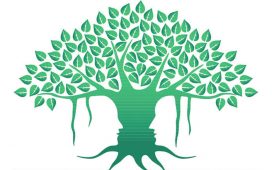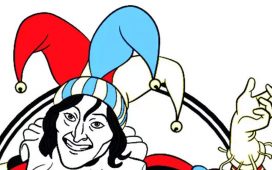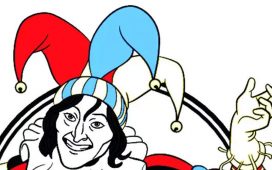
Despite such instances of language building barriers instead of bridges, humans have a gift of tongues, and concoct fictional dialects at the drop of a chat. Conlangs, or constructed languages, continue to be a growing industry in literary and cinematic realms. Linguists create these fictive forms of speech to add authenticity to exotic environments and cultures, distinguish between different groups and communities, and give the reader or viewer an immersive experience by opening magic casements on the foam of ‘perilous seas, in faery lands forlorn’, as the poet put it.
Conlangs not only have vocabularies – Na’vi, the invented idiom for James Cameron‘s Avatar films, set in the habitable satellite of the Alpha Centauri star system, Pandora, reportedly contains some 2,000 words – but also grammar and syntax rules.
Conlangs can be amalgams of words taken from real languages, such as Arabic, Turkish, and Hebrew, as in the film versions of Frank Herbert’s 1965 SF novel, Dune, in which the Fremen who inhabit the desert planet Arrakis, speak Chakobsa.
Na’vi derives phonemes, distinctive sound patterns, from Polynesian and African lingual systems. Conversely, like the Dothraki and High Valerian tongues used in the Game of Thrones series, adapted from George RR Martin‘s novels, A Song of Ice and Fire, conlangs can be made up, just as Klingon was in Star Trek.
Conlangs need not have geographical or zoological boundaries. Undeterred by the minor consideration that he’d never visited the African continent, Edgar Rice Burroughs devised a primate patois for his equatorial African jungle-dwelling protagonist John Clayton, Lord Greystoke, Tarzan of the Apes, whose anthropoidal war cry before visiting GBH on sundry adversaries was ‘Kreegah bundolo!’ which in human speech could be rendered as, ‘Boy, are you gonna get your lumps and then some!’Long before conlang was coined, JRR Tolkien devised several invented languages for his Lord of the Rings epic, including Sindarin, spoken by Elves, Khuzdul, spoken by Dwarves, and the Black Speech of malign Mordor.The leading light of conlangs, however, might be deemed to be Lewis Carroll: ‘Twas brillig and the slithy toves/ Did gyre and gimble in the wabe;/ All mimsy were the borogoves,/ And the mome raths outgrabe.’ Seldom has jabber been more wocky. Or, as Humpty Dumpty mansplains to Alice, ‘When I use a word it means just what I choose it to mean – neither more nor less… the question is which is to be master – that’s all.’
But if conlangs can be confounding, conslangs, such as Cockney rhyming slang, can be perplexing. East End Londoners have created an argot all their own to deceive outsiders. A ‘titfer’ refers to a hat, being derived from ‘tit for tat’ which rhymes with hat. A ‘China’ means a friend, as ‘china plate’ rhymes with mate, as in pal. A ‘pork pie’ is a lie, and a ‘tea leaf’ is a thief.
Language, mainly coded language, is an affirmation of identity and belonging. When asked why he had not emigrated to more tax-friendly environs than Britain like a few of his well-heeled compatriots, John le Carre recounted an anecdote — which would merit a Smiley, as in George — about a customer in his local pub who asked for a gold watch and was served a glass of Scotch whisky. ‘Gold watch/Scotch’ stands to rhyme, if not reason.
Idiomatic usage can, however, have its pitfalls. In 1963, when JFK made his famous ‘Ich bin ein Berliner’ speech to show solidarity with the German city that had been divided by the Berlin Wall, he didn’t realise that the term he’d used referred not only to a citizen of Berlin but also to a popular local comestible, a dual usage, which left many bemused as to why the Leader of the Free World was proudly proclaiming that he was a kind of German jam doughnut.









